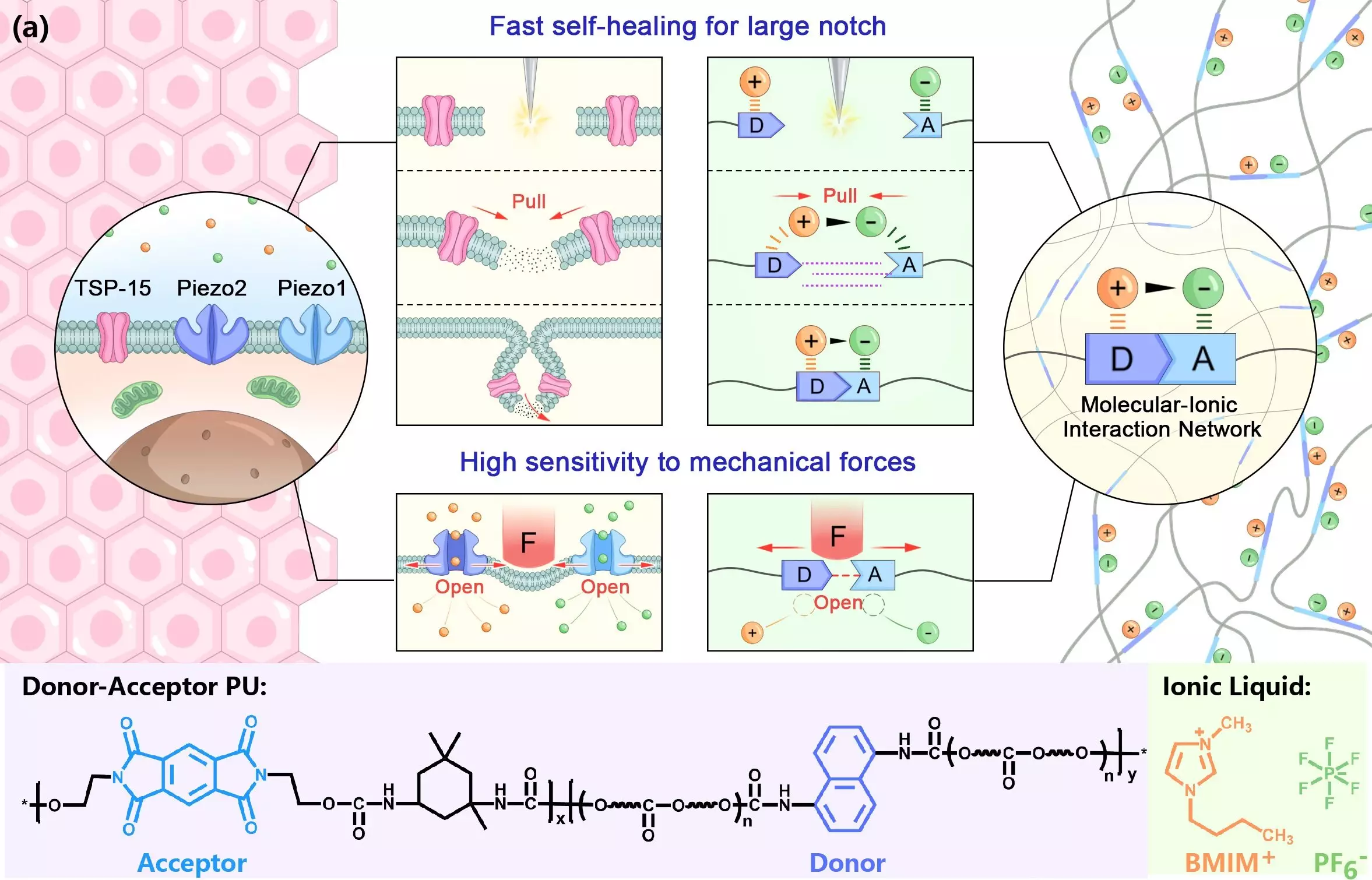In a remarkable stride for material science and healthcare, a team led by Prof. Zhu Jin at the Ningbo Institute of Materials Technology and Engineering (NIMTE) has pioneered an innovative mechano-responsive elastomer known as i-DAPU. With its genesis deeply rooted in the quest for advanced biomimetic sensors, this breakthrough has the potential to revolutionize how we perceive and interact with tactile technologies. Published in Advanced Functional Materials, this research speaks to the ambitious spirit of innovation, filling a gap left by previous studies that had often pursued improvement in individual functionalities without integrating them holistically.
Self-Healing Meets Sensory Intelligence
Central to this advancement is the i-DAPU elastomer which acts as a dielectric material, fundamentally transforming what’s possible in the realm of iontronic skin applications. Traditional sensors often fell short in terms of self-repairing capabilities and responsive sensitivity, focusing on one aspect while neglecting another. By harnessing the natural mechanisms of self-repair observed in transmembrane proteins like TSP-15 and Piezo, the researchers ingeniously embedded molecular-ionic regulatory sites into a polyurethane/ionic liquid (PU/IL) matrix. This innovative coalescence results in an elastomer that not only mimics the tactile qualities of human skin but also boasts the regenerative qualities of biological materials.
Measuring Performance and Precision
The resulting iontronic sensor, intriguingly dubbed DA-skin, showcases a striking self-healing efficiency of 72 μm min-1 alongside an astounding dual-channel sensitivity of 7012.05 kPa-1. Such impressive figures underline a leap forward in material performance, allowing the DA-skin to detect even the subtlest changes in physical stimuli. This level of sensitivity is particularly critical in medical diagnostics; envision a future where wearable sensors can continuously monitor muscle strength changes, enabling early intervention in rehabilitation processes.
Machine Learning Synergy
Moreover, the implications of incorporating deep learning algorithms into the signal processing of the DA-skin are immense. By achieving an astonishing accuracy rate of 99.2% in muscle strength classification, this technology bridges the gap between biological metrics and machine intelligence. This places i-DAPU not just in the realm of passive sensing but as an active participant in healthcare management, potentially moving us toward personalized therapy regimens that adapt in real-time to patient needs.
Implications for the Future
The research conducted by Prof. Zhu Jin and his team serves as a beacon for further exploration in smart skin technology. Not only does this innovation promise advances in healthcare applications, but it also opens discussions about the ethical implications of integrating such responsive technologies into everyday life. The intersection of biomimetic materials, machine learning, and health monitoring encapsulates a futuristic vision, propelling us toward a new era of intelligent tactile perception that closely mirrors human physiological processes. As we continue to innovate, the balance of function, safety, and ethical considerations remains paramount, and this development stands as a testament to that aspiration.

